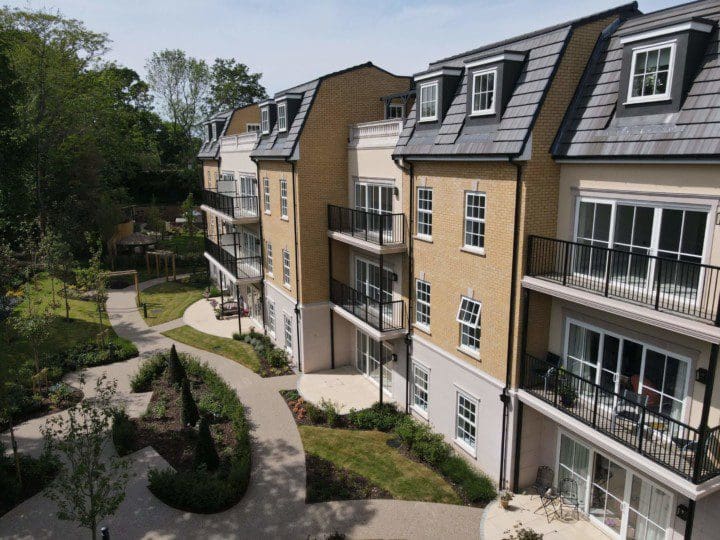As the team running Santhem Residences, a lovely and much in demand retirement village near to Shenfield, in Essex, we spend a lot of time with homeowners looking to downsize and buy a smaller property. We’re used to helping make the process as smooth and stress-free as possible. So here are some tips to get you started.

Why Do People Downsize?
People are motivated to downsize by a variety of reasons. It could be that their children have grown up and flown the nest, and they now find themselves with too much space on their hands. Perhaps their family house requires a lot of work on upkeep. Or maybe they’d like to move to another part of the country, and a smaller home as a part of that move seems sensible given the current property market.
No matter what your reasoning, downsizing can be a great way to simplify your life and make your finances easier. It can be a big decision, but if it’s what you want then it’s definitely worth considering.
What Are the Benefits of Downsizing?
When you downsize, you make a move that may well enable you to live an easier and simpler life. You’ll have more disposable income each month to enjoy life and all its finer things. Housework is also easier in a smaller property;. You’ll find you’re able to keep on top of it without feeling overwhelmed. Plus, you have the opportunity to enjoy all the conveniences of a modern property designed for the way you want to live now.
How Do You Know if Downsizing Is Right for You?
It’s not always an easy decision to downsize your home, but if you can answer “yes” to the following questions, it could be the right move:
- Do you have bedrooms or living rooms you don’t use at all?
- Do you worry about looking after a big house you don’t actually need?
- Could you happily live in a smaller space?
- Would it help you to spend less on heating your home?
- If you did not already own your current house, would you buy it today as the ideal place to live?
What Are the First Steps to Downsizing Your Home?
The first thing you need to do is get an idea of your home’s value. This will give you a good starting point for thinking about the kind of budget you’ll have for buying a new, smaller property.
It’s also important to think about the size and type of home, and living situation, you might like to move to. Do you want another house, but smaller? Does it have to be detached, or would you be OK with a semi-detached or terraced home? How about a flat?
And where do you want to be? Do you want to stay in the area you’re living in now? Or would you like to move to be nearer your children, a sibling, or perhaps even elderly parents?
Once you have a general idea of what you might like, the next step is to research the cost of the kind of property you’d be interested in buying so you can see how much money you might free up from selling your home.
After that, it’s time to start going through your things. Go around your home and think about what things you’d want to take with you and what you’d be happy to give away or sell. This can be a really tough process, but it’s important to be honest with yourself about what you really need and use.
Once you’ve gone through your things, you might want to consider talking to a downsizing consultant who could help you manage your move. At Santhem we help people moving to our homes with this, and we work with several such consultants. They are a huge emotional support, as well as being able to offer advice and practical help with the logistics of moving.
How Do You Declutter Your Home When Downsizing?
One of the most difficult things about downsizing your home is decluttering. When you’ve been living in the same house for years, it can be hard to let go of things.
A slightly different way to approach decluttering is to make lists of things that you really must keep, and things you definitely can let go of, and then try to allocate the in-between things to one or the other. This can be a difficult exercise, but it can be helpful to involve a friend or relative who can offer emotional support and objective opinions.
Once you’ve decided what you’re going to keep and what you’re going to pass on, there are several options for disposing of things. One is to find local charities that will collect things from you. Another is to find local antiques dealers who may be interested in buying things you are letting go.
So, where should you start when downsizing your home?
The key is to start early and to be organised. Start by decluttering your home and getting rid of anything you don’t need or use. This will not only make packing and moving easier, but it will also help you feel lighter and less burdened by your possessions.
Next, make a list of your must-haves and start looking for smaller properties that fit your needs. Don’t be afraid to downsize – you’ll be surprised at how liberating it feels to live in a smaller, simpler home better suited to your life as it is now.
If we can help you in any way, don’t hesitate to get in touch.
